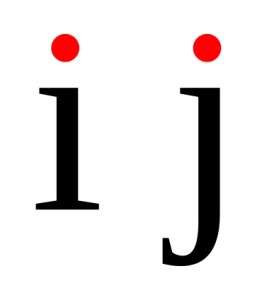 |
| A tittle is a small distinguishing mark, such as a diacritic or the dot on a lowercase i or j. |
If you leave out a dot or tittle you can screw things up. This has been true since biblical times and now with computers it is just as true.
Today you hear on the radio and TV the announcer saying you can find such and such business at www dot and then they give you the rest of the address. Sometimes there are many dots in that url address. You miss just one or add one too many and you get error messages.
Read the instructions
So you are really gifted and can put together anything on Christmas morning under the tree without reading the instructions. Good for you. However, assembling something and shooting an assignment for a client is not the same thing. You forget to read the instructions sent by the client and you could be creating a mess for your client.
You may want to know why some clients send very detailed explanations. Just hire photographers for projects around the country and you will soon discover how many photographers cannot follow instructions.
Lets say you have dyslexia or just some other learning disability making this a struggle for you. This is where you must be proactive with the client.
If the client has a specific uploading site they want you to put your photos–ask them for a dry run. With computers you can save all those settings in most software so when you finish shooting an assignment you know you will deliver the photos.
Go through the instructions one by one and be sure you understand the instructions as the client wants you to understand them. This means read each detail and if it could be interpreted a couple of ways or you are not sure what they are asking then call them or email them with your clarification questions.
Sometimes the instructions are wrong
I have had numerous assignments where the client is still using the same set of instructions from 20 years ago. If you don’t believe me just look at some of the listings in Photographer’s Market. They still want you to shoot film and when you contact them to check on that they say no we haven’t done that in years.
I had one client who wanted the highest resolution images and then so many I was shocked when they requested them all as TIFF files. It was going to take a few hours with a high speed connection to upload them. They were still dealing with lower resolution cameras and files that were quite small. With my camera now we are taking about a 50 meg TIFF file for each photo. Send a few hundred and you will not being going anywhere soon.
Stanley’s Tips for the freelancer
- Always ask them to send their request in writing–preferably an email is how i like to receive them.
- Always have in writing what you are providing the client for the assignment. The best thing is to have a contract spelling this out. It protects both the photographer and the client.
- Spell out when payment is expected and deliverable is expected.
- Review all instructions and ask clarifying questions. This doesn’t make you look like you don’t know what you are doing, but often helps to know you are paying attention to their details.
- If you need to send them files electronically clarify how this will be done. Do they have an ftp server or do you need to provide that.
- Do a test run with one image to be sure they get it and it is like they like it.
- If your project has multiple days of shooting, try and give your client some images as soon as possible to be sure you and they are on the same page. Much better than shooting on and on only to find out you were not on track and they will not be paying you.
- Many clients today may have file naming protocols due to their database system. With software like PhotoMechanic and Adobe Lightroom you can easily rename your images for them and then keep your own system.
- Metadata is important for you and the client. If the client doesn’t need any metadata you still should be putting your © information on every photo. Be sure you put something in the caption and keywords so you can search for the image. Both the PC and Macs will search the metadata and find it for you.
- Keep receipts and scan these and attach them to your invoice. I prefer sending a PDF with all the receipts attached in the PDF as extra pages. I also attach each receipt to the ledger in Quicken Home and Business. So if it was a VISA, AMEX or Check the receipt is scanned and attached to that transaction. Helps for taxes later.
- Always send a W-9 with your first job with a client. My W-9 is a PDF that I attach to the email which also has the invoice.
- When you send an email letting them know you have sent everything to them you can attach your invoice and W-9 to this email or ask them to see if everything is OK that is delivered and then once they respond then send your Invoice then in response. This gives you two things. First you have them acknowledging everything is acceptable and they have the bill. I usually send the invoice and W-9 and ask if everything is acceptable and then I have acceptance and acknowledgment that they recieved my invoice and W-9.
You may have great photos on your camera, but you must get them off the camera and to the client. The speed and accuracy of doing this will win you a client for life. Believe me you would be surprised how many photographers do not follow through on all the instructions given to them by the client.
Those photographers who clearly follow directions make the life for the client so much better.
One agency I do work for confided in me about they have staff photographers that have never completed a project yet. A typical assignment for this agency is to take just a few of the images from a shoot and send them with a press release. The rest of the project goes into their database from the shoot to be used in their stock file system.
The staff photographer had always sent just a few images from their world travel. Yes this photographer was being sent around the world.
The agency was always in need of their stock images for more than those press releases.
By the way even when the photos were sent they were never captioned and key worded correctly.
Needless to say the photographer lost their job. They didn’t loose their job because they didn’t shoot good images–they failed to follow through.
You want to be successful–Big Clue is to follow the directions of the client.



